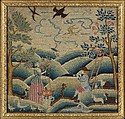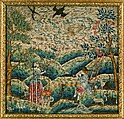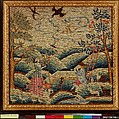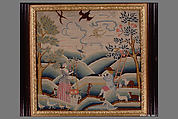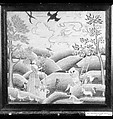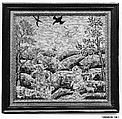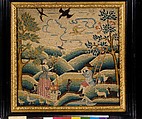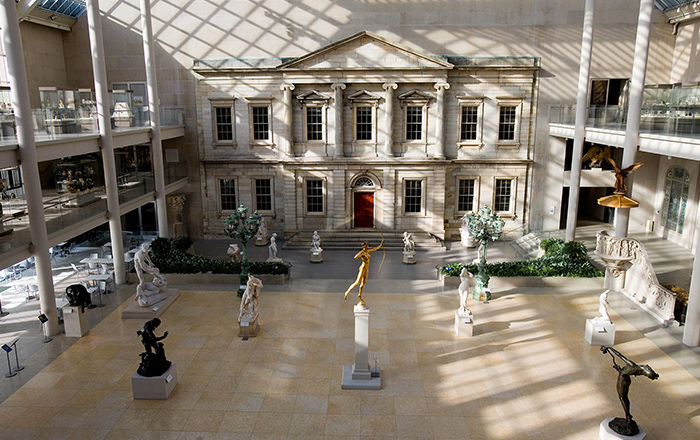Embroidered Picture
Attributed to Jane Ring Alcock
Attributed to Anna Alcock
Not on view
European engravings of romanticized country life, especially of courting shepherds and shepherdesses (as seen on 39.108.1) were readily available in the American colonies, and in the mid-eighteenth century, were often turned to as inspiration for schoolgirl needlework designs. Another favorite design taken from engravings showed the gentry riding out on a foxhunt (39.108.2). Although it is unlikely that there were frequent foxhunts taking place in the American colonies, the popularity of this often-used scene may be attributed to the firm alignment affluent colonists, those well-to-do enough to have their daughters schooled in such ornamental embroideries, felt with the genteel society of the mother country.
Needlework pictures 39.108.1 and 39.108.2 were attributed to Keturah Rawlins (b. 1683) when they were purchased by the museum in 1939. The pictures had descended in the family of Joseph Alcock (1716-1766), Keturah Rawlins’ son. However, based on their mid-eighteenth-century designs, it is now believed that the pictures were embroidered by either Joseph Alcock’s wife, Jane Ring Alcock (1719-1760), Keturah Rawlins’ daughter-in-law, or perhaps by their daughter Anna Alcock (1744-1803), Rawlins’ granddaughter.
Embroideries like these are usually thought to be from the Boston area. Keturah Rawlins was indeed born in Boston. However, if they were made by either Jane Ring Alcock or Anna Alcock, they would most likely have been made in Portsmouth, New Hampshire, a thriving port city more than fifty miles north of Boston. It is recorded that Joseph and Jane Ring Alcock were married in the Portsmouth area and seem to have remained there for their entire lives.
This image cannot be enlarged, viewed at full screen, or downloaded.
This artwork is meant to be viewed from right to left. Scroll left to view more.
